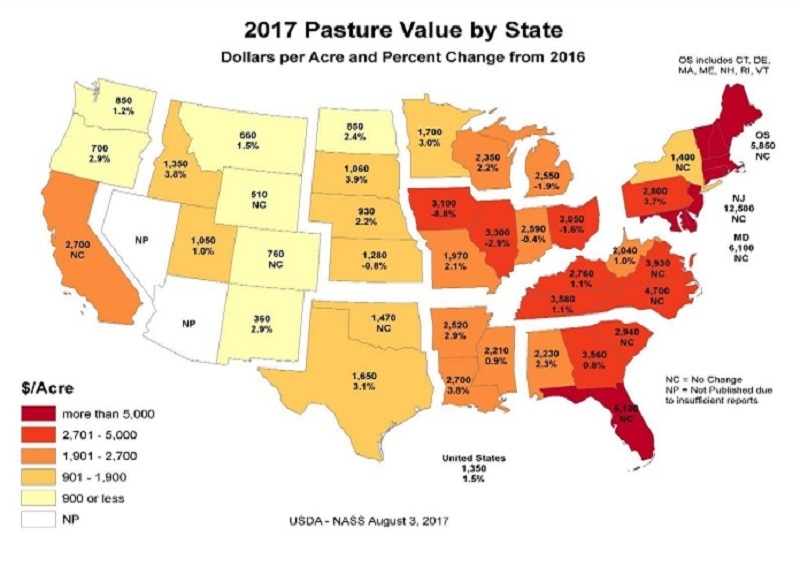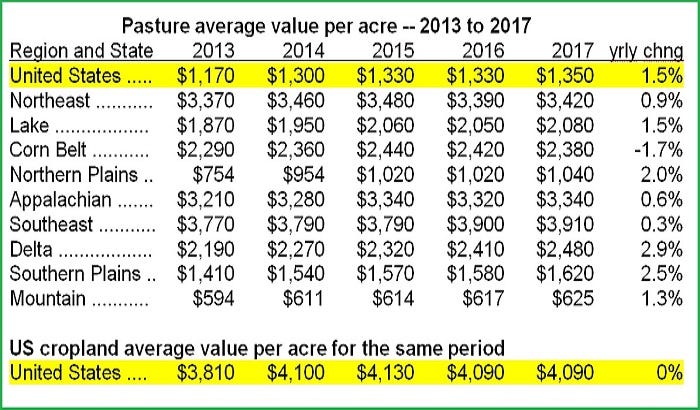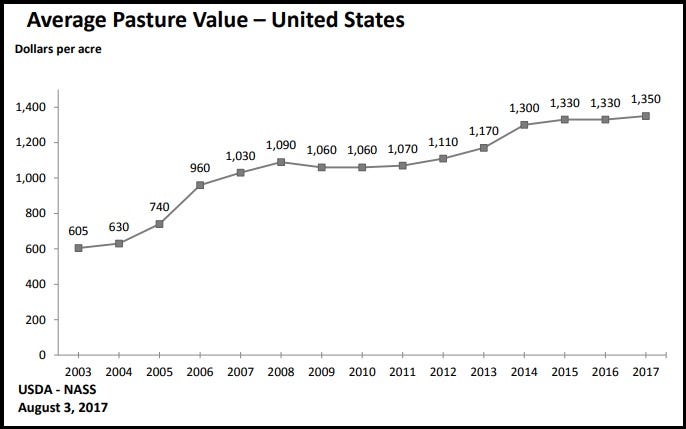
USDA's June report on agricultural land prices a small increase in the past year nationally in pasture values, although some variation by region.
Crop values held steady from 2016 to 2017.
You can see the breakout of regional data on pasture values in the chart below. The change listed is from 2016 values to 2017 values. The full report can be read online.
USDA-NASS (National Ag Statistics Service) says its estimates of land values in this report are based primarily on the June Area Survey, conducted during the first two weeks of June. This annual survey uses a complete, probability-based land-area sampling frame. A sample of about 11,000 segments of land is selected, each about one square mile in size. Surveyors contact all agricultural producers operating land within the boundaries of the enumerated land segments and record land value information for cropland and pasture within these segments.
USDA-NASS also notes pasture, grazing and grassland value refers land that is normally grazed by livestock, but says it does not need to have livestock grazing on it at the time of interview or during the current year in order to be valued as pasture or grazing land.

This chart shows variation but the likelihood there was a general increase in pasture values across USDA's regions, as well as a higher average for the US.

This graph shows more than a doubling of pasture values, nationally, from 2003 to 2017.
About the Author(s)
You May Also Like




